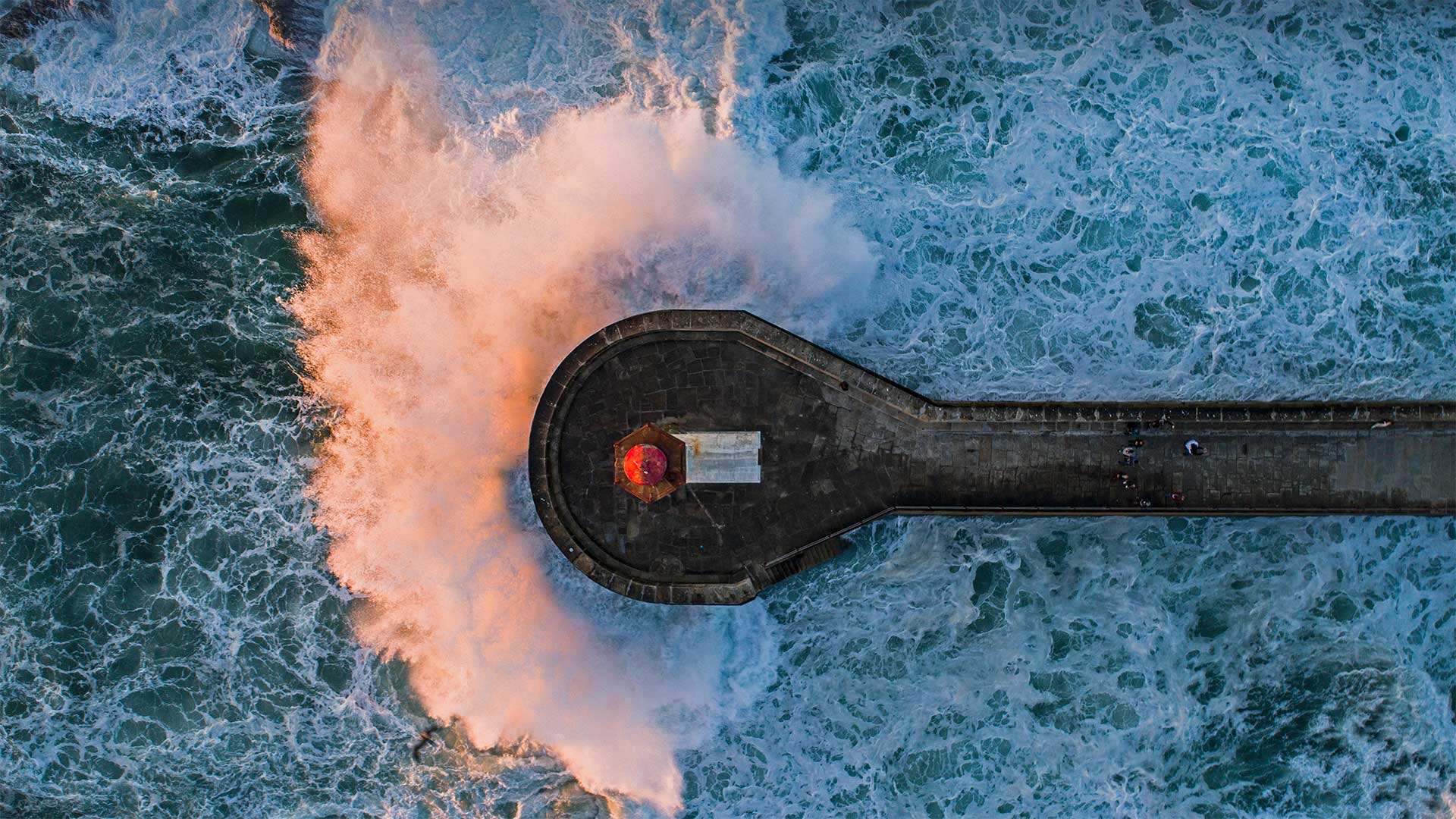海浪撞击费尔盖拉什灯塔,葡萄牙波尔图 Wave crashing on Farolim de Felgueiras, a lighthouse in Porto, Portugal (© Stephan Zirwes/Offset by Shutterstock)

海浪撞击费尔盖拉什灯塔,葡萄牙波尔图 Wave crashing on Farolim de Felgueiras, a lighthouse in Porto, Portugal (© Stephan Zirwes/Offset by Shutterstock)
A lofty lighthouse and a little ocean spray
The Farolim de Felgueiras (Lighthouse of Felgueiras) you see here has withstood relentless waves for around 135 years. It offered its solitary warnings to ships approaching Porto, Portugal's second-largest city, beginning in 1886 until it was finally deactivated in 2009. Even though it's no longer operational, it's still a well-known local landmark. It offers sightseers a beautiful view, and maybe a little ocean spray, from its perch overlooking the mouth of the Douro river where it flows into the Atlantic.
The nearby city of Porto was originally established in around 136 BCE by the Romans as an outpost called Portus Cale, which is believed to be the origin of the name Portugal. The city is also responsible for the name of one of the country's most famous exports, Port wine, the (usually) sweet red fortified wine that was first exported by local merchants across Europe in the second half of the 17th century. These days the city and surrounding municipalities are home to around 1.7 million people, but Porto retains its historic charm. One of its oldest riverside neighborhoods, the Ribeira, was honored as a World Heritage Site by UNESCO in 1996 and was also designated as a National Monument of Portugal.
一座高耸的灯塔和一点浪花
你在这里看到的费尔盖拉灯塔(Farolim de Felgueiras)经受了大约135年无情的海浪。它从1886年开始向接近葡萄牙第二大城市波尔图的船只发出单独警告,直到2009年最后关闭。尽管它已经停止运作,但它仍然是当地著名的地标。它为观光客提供了一个美丽的景色,也许还有一点海洋浪花,从它的栖息处俯瞰着杜罗河口,杜罗河口流入大西洋。
附近的城市波尔图最初由罗马人在公元前136年左右建立,作为一个前哨站,称为波尔图卡尔,这被认为是葡萄牙这个名字的起源。这座城市也是该国最著名的出口商品之一,波尔图葡萄酒(Port wine)的名字的来源,波尔图葡萄酒(Port wine)是一种(通常)甜红色的强化葡萄酒,17世纪后半叶,当地商人首次在欧洲各地出口。如今,这座城市和周围的市政当局居住着大约170万人,但波尔图仍然保持着它的历史魅力。里贝拉是最古老的河畔社区之一,1996年被联合国教科文组织列为世界遗产,并被指定为葡萄牙国家纪念碑。
评论已关闭